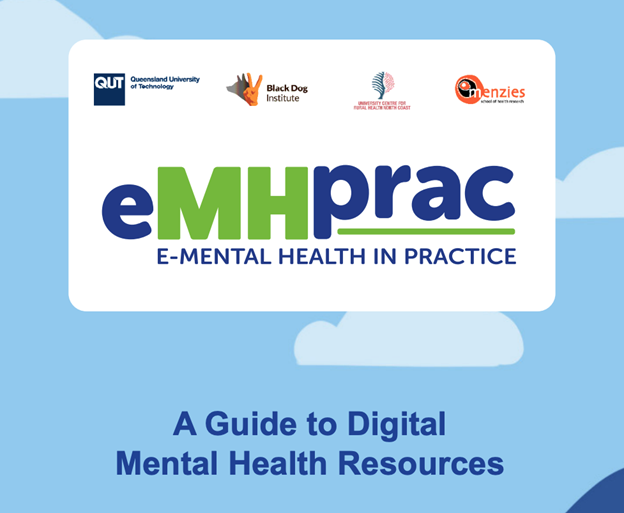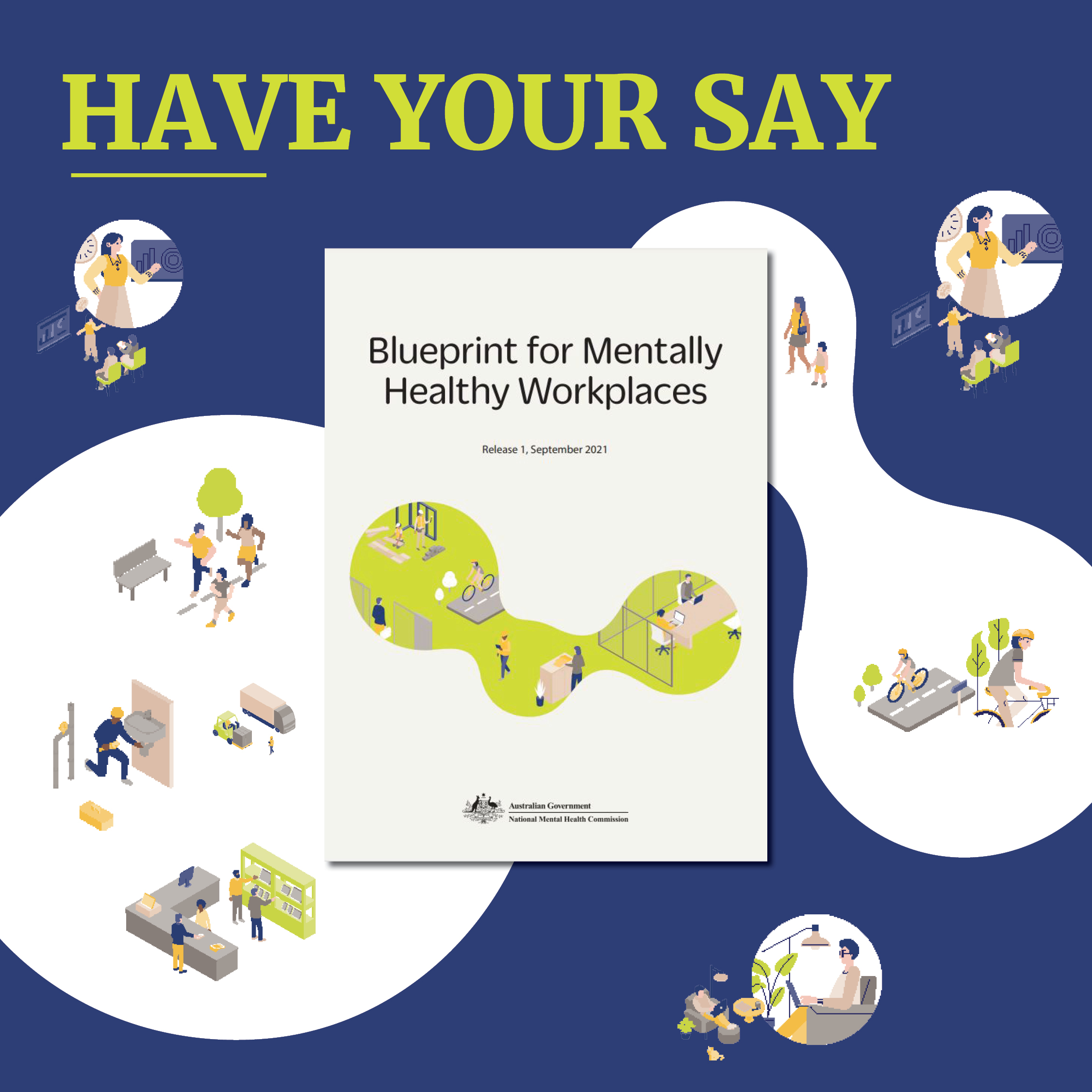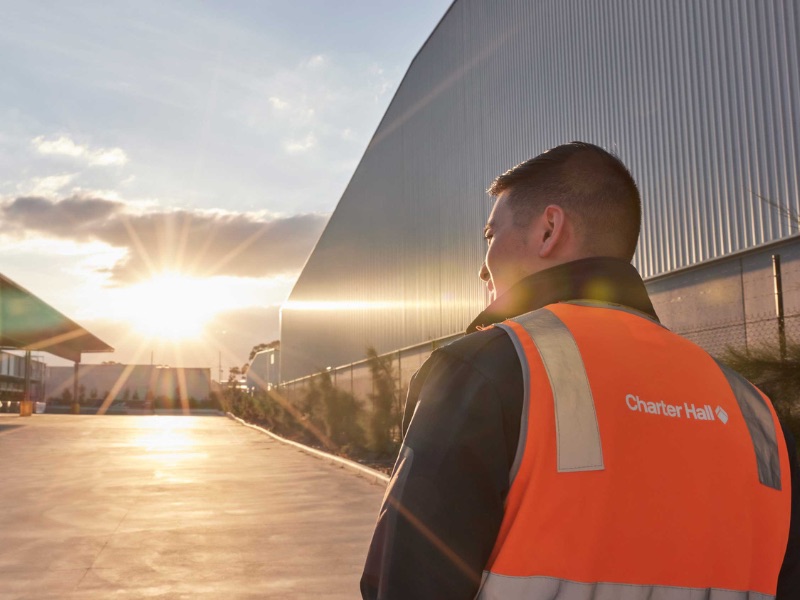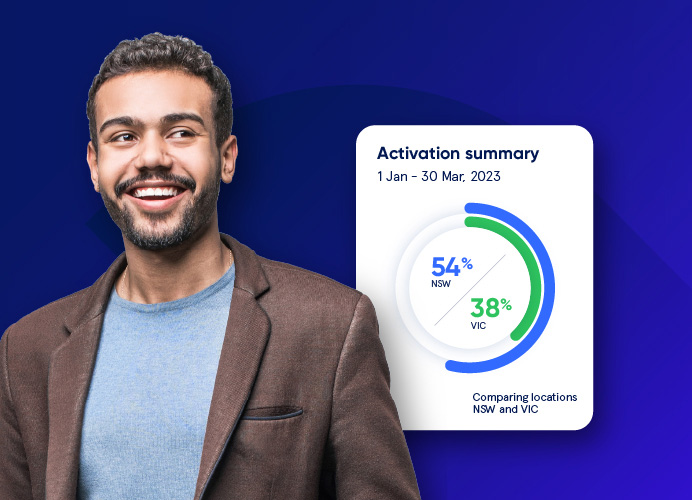Workplace Mental Health Symposium

Insights.
Recently, we participated in the annual Workplace Mental Health Symposium, hosted by the Australia and New Zealand Mental Health Association. It was a great virtual event which attracted speakers and participants from across the Tasman and across the globe. Here’s our recap of some of the highlights from this year’s program:
Update: Due to changes in rules and regulations in Australia, this guide has been updated at least twice since the original version was posted on this blog. Please click this image to go to the newest version.
Dr Jamie Phillips
Medical Director and Head of Member Support, Sonder
In these times of pandemic uncertainty, Jamie spoke about the need for all employees, especially managers, to focus on what you can control, and not get distracted by what you can’t.
He told stories from his time in the UK Armed Forces and Australian Defence Force, and the need to trust others to help you navigate situations you do not understand.
Jamie’s four key insights for managers were:
- You are not a mental health expert – and no one expects you to be;
- Use evidence to shape your approach – focus on what matters;
- Embrace chaos – this is where the real impact happens; and
- Be human and be kind – be real, be genuine, and care.
He discussed the following three research studies from the UK:
- Mental health in the UK during the COVID-19 pandemic: cross-sectional analyses from a community cohort study – which found the most at-risk group was that of younger females living alone, from ethnic minorities;
- Mental health during lockdown: evidence from four generations – which found a heightened negative impact on female millennials; and
- Mental health responses to the COVID-19 pandemic: a latent class trajectory analysis using longitudinal UK data – which found that people living in areas affected by lockdown, struggling financially, with pre-existing conditions, or infection with COVID-19 (SARS-CoV-2) might benefit most from early intervention.
Allan Sicard
Former NSW Police Commander, with 40 years of service.
Allan was the Police Commander for the Mosman Collar Bomb incident in 2011, working with emergency partners to form a trauma plan, and providing authorisation for the device to be removed. He was also the Forward Police Commander for the first two hours of the Lindt Cafe siege; coordinating mass evacuations and managing the evolving risk in Sydney that day.
Allan’s stories were super interesting. His key learnings included:
- Never give up – when Allan arrived at the Mosman incident, the bomb squad told him that the success rate of removing collar bombs was zero per cent, but thankfully neither he nor the team around him gave up on 18 year old Madeleine Pulver;
- Train before you need it – when the worst situation unfolds, it’s too late to start your training, so always be developing the skills of your team in advance;
- Support each other – check in on each other and be kind to each other;
- Trust others – everyone wants to do their best, so trust them to do it; and
- We are stronger together – we can’t do it on our own, so delegate and work with all teams and stakeholders around you, for the best possible outcomes.
Update: Due to changes in rules and regulations in Australia, this guide has been updated at least twice since the original version was posted on this blog. Please click this image to go to the newest version.
Tania Domett
Founder and Director, Cogo Consulting
Tania shared the findings of The Workplace Wellbeing Survey, where Cogo surveyed more than 1,500 workers across Australia and New Zealand in July 2020, and found that more than once a week:
- 85 per cent of participants showed signs of exhaustion
- 77 per cent showed signs of lack of engagement
- 45 per cent showed signs of depersonalisation
- 44 per cent showed signs of cynicism.
She said that COVID-19 has heightened three known causes of burnout:
- Overwork;
- Lack of control; and
- A sense of isolation.
The survey showed that the highest causes of stress amongst respondents were:
- Nature of work – 50 per cent
- Work politics of bureaucracy – 46 per cent
- Unrealistically high work load – 39 per cent
- Behaviour of manager(s) – 30 per cent
- Behaviour of co-workers – 29 per cent
- Fear of losing job – 24 per cent
- Job design – 24 per cent
- Bullying, harassment, discrimination – 17 per cent
Being able to talk to someone at work about how well they can cope with the stress they experience is key. Yet 44 per cent of respondents said they could not talk to anyone at work.
The study found that while 81 per cent of workers are provided with at least one workplace wellbeing program or service, the uptake is very low.
She finished by giving the analogy of the fish bowl; you can change the food to improve the health of the fish, but sometimes what’s needed is cleaning the fish bowl out completely for a more holistic approach to improving long-term health.
Dr Carlo Caponecchia
Senior Lecturer and Associate Dean Equity Diversity and Inclusion, Faculty of Science, UNSW. Member of the Standards Australia Technical Panel SF-001.
Carlo discussed the release of the new international standard, ISO 45003:2021 Occupational health and safety management – Psychological health and safety at work – Guidelines for managing psychosocial risks.
He highlighted the following foundational challenges that organisations must face in order to improve psychosocial health at work, and how ISO 45003 helps organisations address these challenges:
- Mental health misconceptions
- Carlo explained that mental ill health is typically viewed as static, binary, and caused by factors external to the organisation.
- ISO 45003 helps organisations understand that whilst mental ill health is accounted for, the organisational focus should be more on the prevention and management of psychosocial risks for everyone in the workplace. It draws attention to the sources of harm (hazards) for which the organisation is responsible.
- Carlo explained that mental ill health is typically viewed as static, binary, and caused by factors external to the organisation.
- Terminology
- Often, organisations are slow to act on psychosocial health and safety improvements because they do not understand the terminology around it.
- ISO 45003 helps by providing definitions of relevant concepts. It also gives a process for deciding on a hazard term, a risk term, and an outcome term. The standard models simplicity, consistency and alignment.
- Often, organisations are slow to act on psychosocial health and safety improvements because they do not understand the terminology around it.
- Understanding hazards, outcomes and interactions
- WHS and HR representatives often lack familiarity of and confidence in psychosocial hazards.
- ISO 45003 can help by providing a clear list of examples of hazards. It recognises that psychosocial hazards interact with one another (cumulatively) and with other hazards (such as hazardous manual tasks). The standard refers to the need to develop competence to identify and manage psychosocial risks.
- WHS and HR representatives often lack familiarity of and confidence in psychosocial hazards.
- Which controls to focus on
- Organisations tend to use individual level controls (such as training, resilience, wellness, exercise, mindfulness, counselling and EAPs).
- ISO 45003 helps organisations see that a more holistic approach is needed – as part of a broader health and safety framework. Elimination of hazards should come first then management of risks. Work should be designed to prevent risks to psychological health.
- Organisations tend to use individual level controls (such as training, resilience, wellness, exercise, mindfulness, counselling and EAPs).
New guide: A simple overview of ISO 45003.
Lucinda Brogden AM
Chair and Commissioner, National Mental Health Commission
Lucinda launched the Blueprint for Mentally Healthy Workplaces. The Blueprint has been developed through the National Workplace Initiative which is led by the National Mental Health Commission, with input from the Mentally Healthy Workplace Alliance.
The Blueprint aims to create a nationally consistent approach to mentally healthy workplaces. It is based on three pillars:
- Protect – Identify and manage work-related risks to mental health;
- Respond – Build capacity to identify and respond to support people experiencing mental ill-health or distress; and
- Promote – Recognise and enhance the positive aspects of work that contribute to good mental health.
Feedback on Release 1 is invited until Friday 26 November.
Update: Due to changes in rules and regulations in Australia, this guide has been updated at least twice since the original version was posted on this blog. Please click this image to go to the newest version.
Shanna White
CEO (and psychologist), Cognitive Behaviour Education
Shanna gave a clearly articulated overview of vicarious trauma and explained key terms in both simple and more detailed terms. For example:
- Vicarious trauma
- “The boxing match”.
- A transformation of the helper’s inner experience, meaning the trauma of others affects you as if you experienced it directly;
- “The boxing match”.
- Burnout
- “The Sydney-to-Hobart yacht race”.
- About the relentless nature of something and doing too much, which can result in a state of emotional, physical and mental exhaustion; and
- “The Sydney-to-Hobart yacht race”.
- Compassion fatigue
- “The marathon”.
- About the constant requirement of our role as carers to be compassionate and caring for the needs of the people we work with. It is the deep emotional and physical wearing down that occurs when helping professionals are unable to refuel and renew.
- “The marathon”.
Her symptoms of vicarious trauma to look for were:
- Dreading going to work
- Fatigue
- Feeling overwhelmed
- Hopelessness
- Apathy
- Health problems
- Insomnia
- Resentment
- Irritability
- Difficulty concentrating
- Mistakes at work or at home
- Procrastination
- Decreased productivity
- Lack of goals (professional and personal)
- Conflicts with others
- Unhealthy coping strategies
- Disengaging from social networks.
Heidi Sturk
Director, e-Mental Health in Practice (eMHPrac) at QUT (Queensland University of Technology)
Representing eMHPrac (funded by the Australian Department of Health), Heidi reminded health practitioners about eMHPrac’s comprehensive ebook, A Guide to Digital Mental Health Resources, as well as other free resources listed on their site. These resources included:
Head to Health – Provided by the Australian Department of Health, this site brings together apps, online programs, online forums, and phone services, as well as a range of digital information resources.
Wellmob – Developed by eMHPrac in collaboration with the Australian Indigenous HealthInfoNet, this site brings together online resources “made by and for our mob”. All with a focus on social and emotional wellbeing.
Mental Health Online – An initiative of Swinburne University’s National eTherapy Centre (NeTC), this site is funded by Australia’s Federal Department of Health and aims to provide free online services and programs – including self-assessment, self-help, virtual reality mindfulness experiences, and professional support.
MindSpot – Based at Macquarie University in Sydney, funded by the Australian Government and contracted by the Department of Health, MindSpot provides free, anonymous assessment and treatment of adults experiencing stress, anxiety, depression, OCD, PTSD, and chronic pain.
myCompass – This site from Black Dog Institute is a free, personalised, self-help tool for mental health.
Update: Due to changes in rules and regulations in Australia, this guide has been updated at least twice since the original version was posted on this blog. Please click this image to go to the newest version.
Update: Due to changes in rules and regulations in Australia, this guide has been updated at least twice since the original version was posted on this blog. Please click this image to go to the newest version.

Thank you
A big thank you to everyone who successfully transitioned this year’s Workplace Mental Health Symposium to a virtual event. It was wonderful to be in the same virtual room as so many practitioners, sharing learnings and best practices around workplace mental health and employee wellbeing.
Update: Due to changes in rules and regulations in Australia, this guide has been updated at least twice since the original version was posted on this blog. Please click this image to go to the newest version.
Want to learn more?
For more information about Sonder and/or to book a demo, please contact us here.
About Sonder
Sonder is an Active Care technology company that helps organisations improve the wellbeing of their people so they perform at their best. Our mobile app provides immediate, 24/7 support from a team of safety, medical, and mental health professionals - plus onsite help for time-sensitive scenarios. Accredited by the Australian Council on Healthcare Standards (ACHS), our platform gives leaders the insights they need to act on tomorrow's wellbeing challenges today.
Related posts
There's so much more to share
Sonder is reimagining health, safety and wellbeing support. Sonder proves human centric care leads to earlier intervention. Sonder impacts one person at a time to drive meaningful change across an organisation. Sonder understands people and how to support them.







